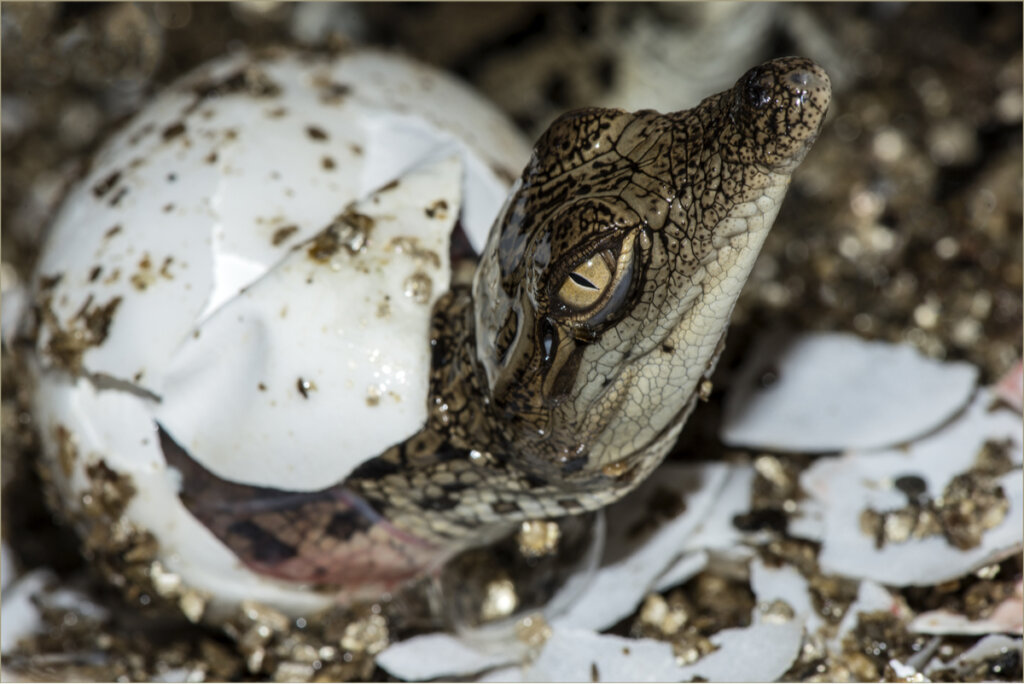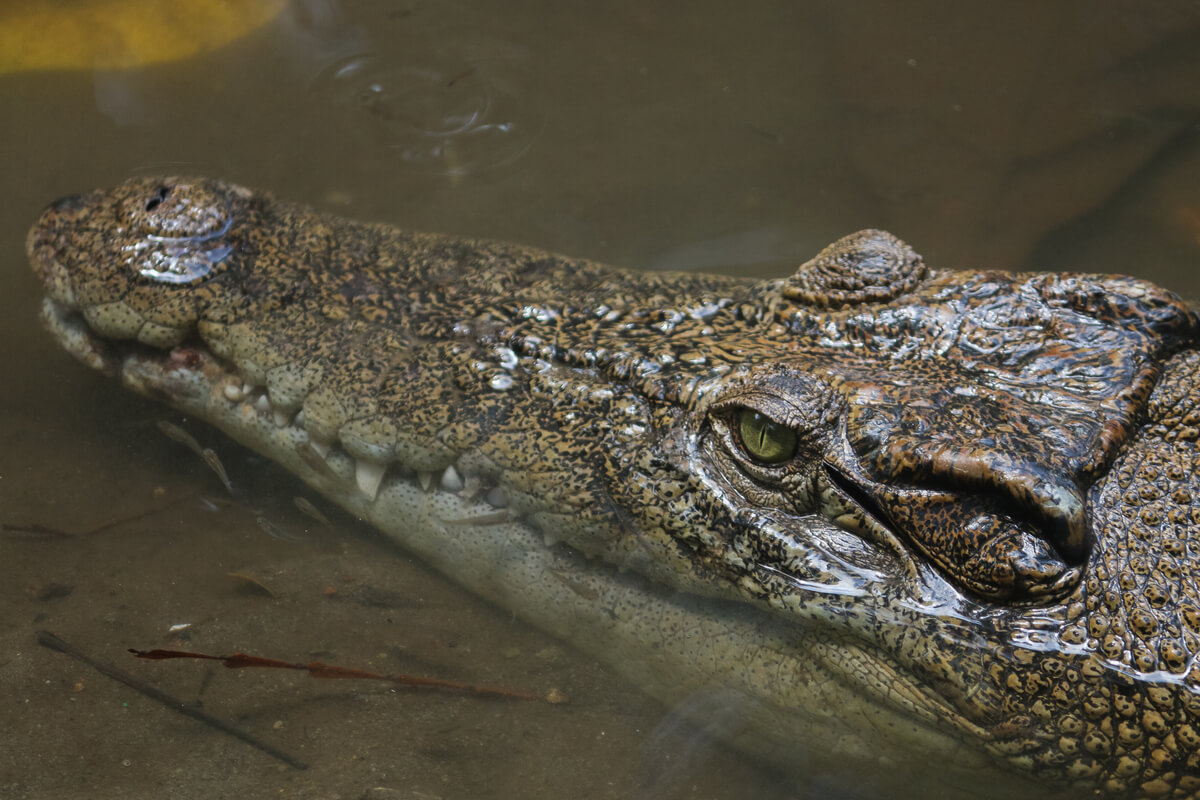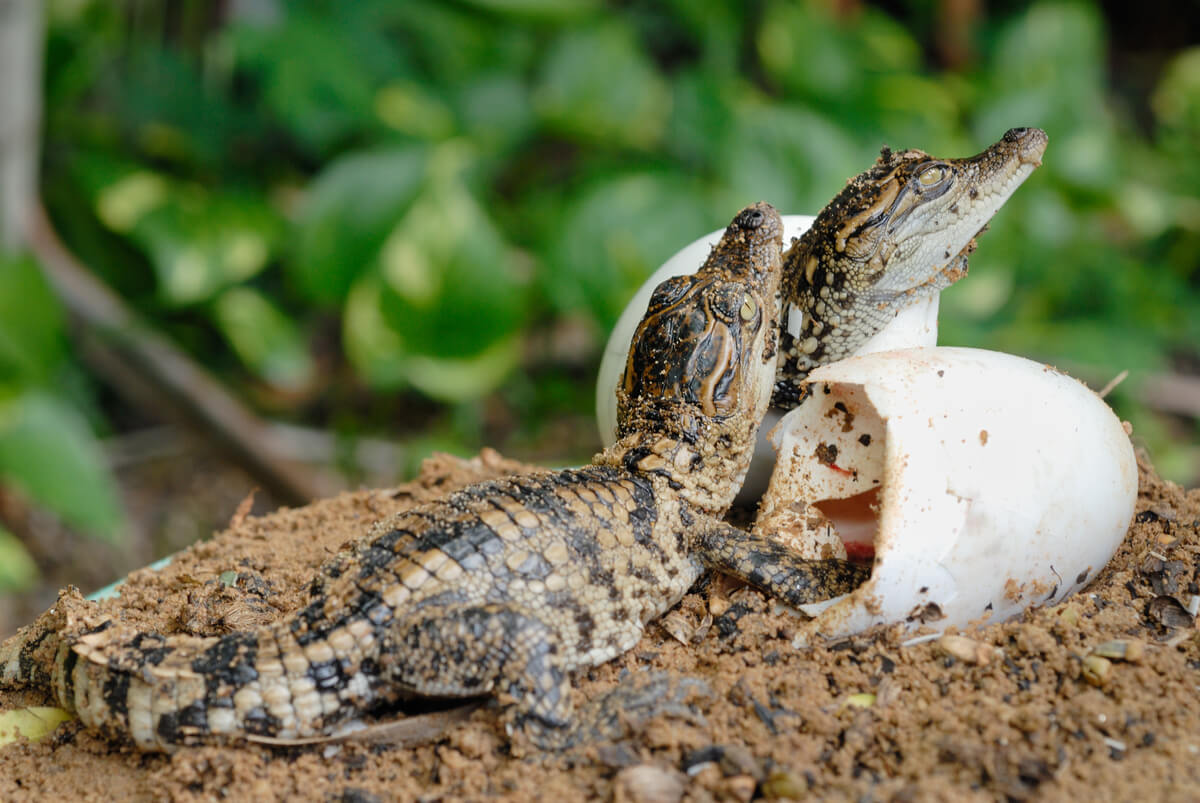How Do Crocodiles Reproduce?

Crocodiles are imposing beings – lethal, fast, and armed with teeth ready to kill. Although they’re at the pinnacle of the food chain and absolutely dominate the ecosystems they inhabit, they also go through stages of growth when they’re small, vulnerable and even quite adorable. However, do you know how crocodiles reproduce?
Although you wouldn’t have thought it, the act that leads to fertilization in crocodiles is more similar than you might imagine to the one we carry out as mammals. If you want to know everything about the sexual dance these reptiles perform then keep reading!
Crocodile characteristics
First of all, we should note that the term “crocodile” refers, in its strictest sense, only to members of the family Crocodylidae. This taxon includes three genera divided into 15 different species, which are considered the representatives of “typical crocodiles”. Some examples are Crocodylus niloticus, Crocodylus palustris, and Crocodylus siamensis.
If a broader classification criterion is used, then all the members of the order Crocodilia can be included within this group. This includes crocodiles, alligators, alligators, and gharials. Be that as it may, all these reptiles are living fossils —the beginning of their existence dates back 83.5 million years. They have robust bodies and scales, sharp teeth, and are bound to the water.
All crocodiles are reptiles with an elongated body, a prominent flat snout, a compressed tail, and various adaptations to the aquatic environment.

Where do they live?
Crocodiles are eminently tropical animals and can be found in Africa, Asia, Australia and certain regions of the Americas. Its tendency to hot climates is not anecdotal: reptiles are ectothermic, and, therefore, they need ambient heat to function. Therefore, you’ll never see a crocodile living at the poles.
Furthermore, these beings are inseparable from aquatic environments. Their hunting strategy is of the “sit and wait” type. They remain hidden and immobile in a body of water, waiting for a mammal or bird to come to drink. Once they catch their prey, they carry it deep into the body of water they’re in, drown it, and tear it apart.
How do crocodiles reproduce?
Crocodiles are generally polygynous, which means that males try to reproduce with as many females as possible. In any case, studies indicate that it’s a few dominant males that leave offspring in each reproductive cycle, thus displacing the weakest.
When a receptive male and female meet, a series of reproductive behavior routines take place — facial strokes, swimming poses, and submissive behaviors, among others, and these can extend over time. When the female has been “convinced”, both go into the water and the actual fertilization takes place.
Strangely enough, these animals have internal fertilization. As indicated by professional sources, the crocodile phallus is a cone-shaped organ, which ends in a cloacal septum. This isn’t visible in normal situations, as it’s retracted into the cloacal orifice. The insertion of the penis occurs after the alignment of the cloaca, and the act lasts about 15 minutes.
Once the crocodiles reproduce, the male abandons the female and looks for other potential reproductive partners.
When do they reach sexual maturity?
Crocodiles reach sexual maturity at an average of 10 years of age. This figure may seem very high, but you must bear in mind that specimens of the Crocodylus porosus species live up to 70 years, while Crocodylus niloticus ranges from 50 to 60 years. In other words, they’re really long-lived reptiles.
Incubation of eggs
Crocodiles are oviparous. This means that, after fertilization, the females lay a variable number of eggs that develop in the environment. Before oviposition occurs, females dig nests, which can be permanent or abandoned. You can detect crocodile activity without seeing them, thanks to these constructions.
Once the female chooses the right place, she proceeds to give birth to her offspring. Depending on the species, she’ll hatch between 7 and 95 eggs. The more typical range is between 40 and 60. Once it has finished laying, it covers them and doesn’t stray too far from them at any time during the entire incubation process, which lasts up to 95 days.
Determination of the sex of the pups
This may already sound familiar to you, as it’s common knowledge that the sex of baby crocodiles is determined by temperature. As indicated by studies published in the Royal Society, eggs incubated at 30℃ (86 F) will give birth to females, while those exposed to higher temperatures (34℃ – 93 F)) will be males.
Because it’s much easier for the temperature to be kept constant at about 30℃ than at 34℃, most of the young that are born are female, although there may be specimens of both sexes in a single clutch due to minimal environmental changes. Therefore, sources already cited estimate that the gender ratio in most populations of crocodiles and alligators is 10: 1, that is, 10 females for each male.
The mortality rate is very high during infancy, but when crocodiles grow up, they’re usually able to survive without any problem.
Parental care in crocodiles
Crocodiles are the most social reptiles out there. Although they don’t form groups, the specimens usually congregate together on the banks of the rivers, warming themselves in the sun. Hierarchies do occur: the largest crocodiles are those that have access to the most advantageous areas and who have more females in the mating season.
Due to their sociality, crocodiles are able to emit vocalizations and communicate with each other. This is very important during the development of the young, as they begin to produce a sound in the form of a “chirp” before they’re born, thus warning their mother that they’re ready to go out into the world. On hearing this call, the female digs the nest and tries to ensure that all her offspring are born safe and sound.
Once all the eggs have hatched – they usually do it almost at the same time – the female puts the young in her mouth and takes them to the water, where they’ll remain in a group until they reach a sufficient size to emancipate themselves.
As a curiosity, studies in the journal Nature have shown that females pay less attention to the calls of the largest babies, as this could favor their autonomy and detachment.

There are countless curiosities regarding crocodiles, from how they reproduce to determining their sex. Apart from their ruthless killing instinct, you can find attentive and careful mothers and a sociality that’s very unusual in the world of reptiles. Without a doubt, these living fossils will never cease to amaze us.
All cited sources were thoroughly reviewed by our team to ensure their quality, reliability, currency, and validity. The bibliography of this article was considered reliable and of academic or scientific accuracy.
- Piña, C. I., Merchant, M. E., & Verdade, L. M. (2015). Introduction: reproduction in Crocodilians. South American Journal of Herpetology, 10(1), 1-3.
- Lang, J. W. (1987). Crocodilian thermal selection. Wildlife management: crocodiles and alligators, 301, 317.
- Larriera, A., Simoncini, M. S., Cruz, F. B., & Piña, C. I. (2011). Climatic effects on the reproductive biology of Caiman latirostris (Crocodylia: Alligatoridae). Amphibia-Reptilia, 32(3), 305-314.
- Chabert, T., Colin, A., Aubin, T., Shacks, V., Bourquin, S. L., Elsey, R. M., … & Mathevon, N. (2015). Size does matter: crocodile mothers react more to the voice of smaller offspring. Scientific reports, 5(1), 1-13.
- Woodward, D. E., & Murray, J. D. (1993). On the effect of temperature-dependent sex determination on sex ratio and survivorship in crocodilians. Proceedings of the Royal Society of London. Series B: Biological Sciences, 252(1334), 149-155.
